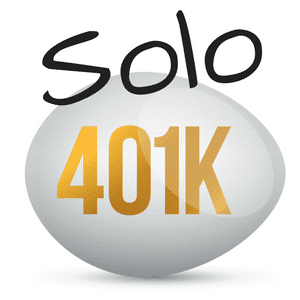How Does a Self-Directed Solo 401(k) Work?
When most people think about 401(k) plans, they think about going through their employer. An employer can create a plan, offer it to their employees, and employees make contributions through their paychecks. But a Self-Directed Solo 401(k), while still a 401(k), can work very differently. What separates it from a traditional employer-sponsored plan, and what are the benefits of using self-direction? Let us look deeper into this type of account to figure out what makes it tick.
Learn the Basics of a Self-Directed Solo 401(k) First
Let us get started by talking about the basics:
- A Self-Directed Solo 401(k) plan is an IRS-approved, qualified 401(k) plan, just as legitimate as any other. Although it is typically used by people like self-employed sole proprietors, corporations, or LLCs, it is still a retirement plan with valid approval from the IRS.
- A Self-Directed Solo 401(k) plan, like any 401(k) plan, has high contribution limits. A self-employed 401(k) participant does have some nice options here, however, making contributions as both the employee and the employer. This can result in some of the highest contribution limits of all retirement accounts.
If you review our Self-Directed Solo 401(k) page here at American IRA, you will see we have a nickname for a Self-Directed Solo 401(k). It is a “Self-Directed IRA on steroids.” Because of the high contribution limits, individuals can realize immediate tax savings on this vehicle while also putting aside more money for retirement than other plans may have allowed.
The Benefits of a Self-Directed Solo 401(k) Plan
Now that we have gotten some of the particulars out of the way, let us talk about why a Self-Directed Solo 401(k) can be such a powerful way to invest in retirement.
The first benefit—and one mentioned above—is the potential for very high contributions. For example, in 2021, annual contributions of up to $58,000 and with an additional $6,500 catch-up contribution for those over age 50 made this one of the best vehicles for putting aside a large amount of money. For that reason, individuals with high incomes through self-employment should certainly do their due diligence on this retirement investment account to make sure it is the right one for them.
Another benefit is the ability of an individual to borrow from their Self-Directed 401(k), as long as the loans are paid back within 5 years. Investors can borrow up to $50,000 or 50% of the account value (whichever is less) for any purpose. This adds to the flexibility of a Solo 401(k).
There are also a number of other benefits, such as potential exemption from UDFI when investing in real estate with leverage. However, it is important to make sure that you talk with a tax professional to see if this applies in your case.
Is It Time to Consider a Self-Directed Solo 401(k)?
Given all of the benefits listed above, it’s no wonder that so many investors like to think about 401(k)s when planning for retirement. But there are other options that investors can consider. For example, a self-employed retirement investor might also do well with a SEP-IRA. Considering these account types is a critical decision for anyone who wants to put aside a lot of money in retirement, and it is critical for anyone considering beginning their retirement investment journey that they understand the power of these accounts.
You can read more about the benefits of this account type or how to fund a Self-Directed Solo 401(k) at our dedicated Self-Directed Solo 401(k) page. Interested in learning more about Self-Directed IRAs? Contact American IRA, LLC at 866-7500-IRA (472) for a free consultation. Download our free guides or visit us online at www.AmericanIRA.com.









